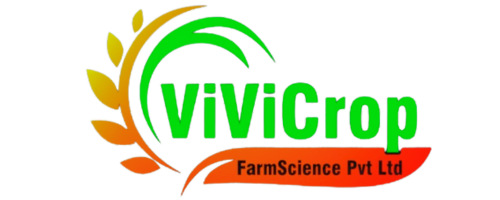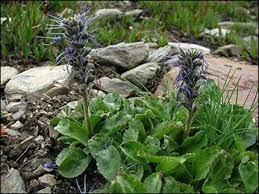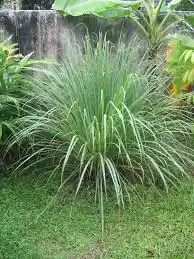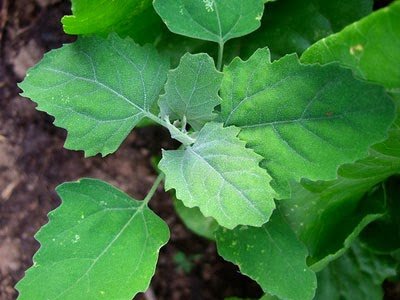Kutki (Picrorhiza kurroa) Nutrition Requirements
Nutrition required by Kutki (Picrorhiza kurroa) at each stage of its life cycle.
SOIL PREPARATION
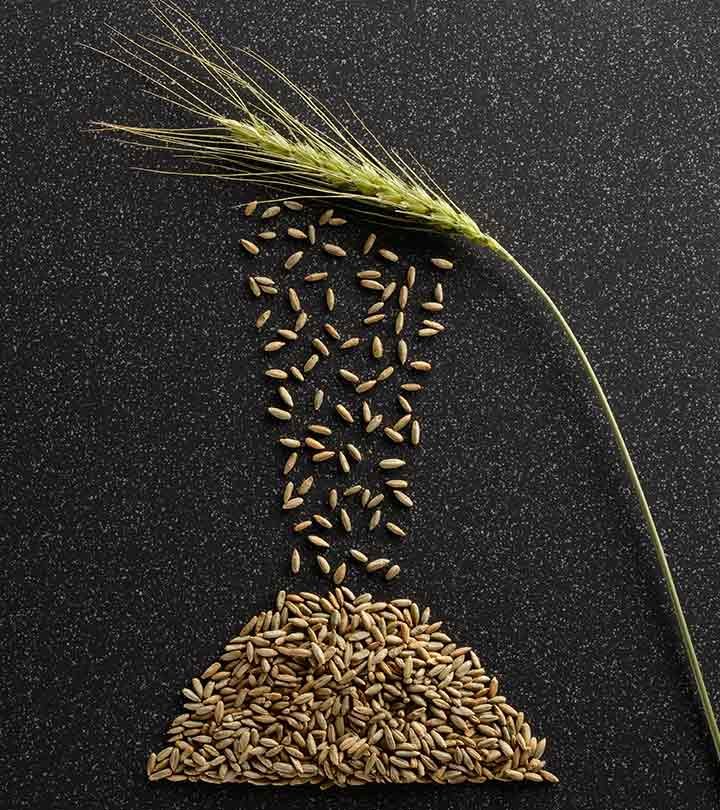
Soil Preparation
Kutki, also known as Picrorhiza kurroa, is a medicinal plant native to the Himalayan region and is primarily cultivated for its medicinal properties. Soil preparation plays a crucial role in the successful cultivation of kutki.
Here's a general guideline for soil preparation and the nutrition requirements at the soil preparation stage for kutki:
**Soil Preparation Method:**
1. **Site Selection:** Choose a well-drained site with loamy or sandy-loam soil. The site should receive partial to full sunlight, as kutki prefers semi-shaded conditions.
2. **Land Preparation:** Clear the land of any weeds, rocks, or debris. Plow the land to a depth of about 15-20 cm to break up the soil and improve aeration. Follow this with harrowing to further refine the soil texture and create a fine seedbed.
3. **Soil Amendments:** Conduct a soil test to assess the soil's pH and nutrient levels. Kutki thrives in slightly acidic to neutral soil with a pH range of 6.0 to 7.5. Based on the soil test results, amend the soil with organic matter such as well-rotted compost or farmyard manure to improve soil fertility and structure.
4. **Bed Preparation:** Form raised beds or ridges to improve soil drainage, especially in areas prone to waterlogging. Beds should be approximately 60-90 cm wide and spaced about 30-45 cm apart, depending on the planting density.
5. **Mulching:** Consider applying a thin layer of organic mulch such as straw or dried leaves to the soil surface between the beds to help conserve soil moisture, suppress weed growth, and maintain soil temperature.
**Nutrition Requirement at Soil Preparation Stage:**
During the soil preparation stage for kutki cultivation, it's essential to ensure that the soil provides adequate nutrients for healthy plant growth. Here are some key nutrients and their roles:
1. **Nitrogen (N):** Nitrogen is essential for vegetative growth and overall plant vigor. Incorporate nitrogen-rich organic matter such as compost or manure into the soil during preparation to supply this nutrient.
2. **Phosphorus (P):** Phosphorus is crucial for root development, flowering, and seed formation. Kutki plants benefit from phosphorus-rich soil, so consider adding phosphate fertilizers such as rock phosphate or bone meal during soil preparation if the soil test indicates a deficiency.
3. **Potassium (K):** Potassium plays a vital role in regulating water uptake, improving stress tolerance, and enhancing disease resistance in plants. Kutki plants require potassium for healthy growth, so ensure that the soil contains sufficient potassium levels by incorporating potassium-rich organic amendments or using potassium fertilizers like potassium sulfate or potassium chloride if needed.
4. **Micronutrients:** In addition to the major nutrients (N, P, K), kutki plants also require essential micronutrients such as iron, zinc, manganese, and copper. Ensure that the soil provides adequate levels of these micronutrients by incorporating micronutrient-rich organic amendments or using micronutrient fertilizers if necessary.
By following these soil preparation methods and addressing the nutritional requirements at the soil preparation stage, growers can create an optimal growing environment for kutki cultivation, leading to healthy plant establishment and maximum yield potential. Additionally, regular soil testing and monitoring throughout the cultivation cycle will help ensure that the soil's nutrient levels remain balanced to support kutki's growth and development.
Early Growth (Germination to Establishment)

Early Growth
During the early growth stage (germination to establishment) of kutki (Picrorhiza kurroa), it's essential to provide the necessary nutrients to support healthy seed germination, seedling establishment, and early vegetative growth.
Here are the key nutritional requirements during this stage:
1. **Nitrogen (N):** Nitrogen is crucial for promoting vigorous early growth, including root and shoot development. Adequate nitrogen availability encourages healthy leaf expansion and overall plant vigor during the early stages of kutki cultivation.
2. **Phosphorus (P):** Phosphorus is essential for promoting strong root growth and early establishment of kutki seedlings. It plays a vital role in energy transfer within the plant, facilitating cell division and growth processes during the early growth stage.
3. **Potassium (K):** Potassium is important for regulating water uptake, improving stress tolerance, and enhancing disease resistance in kutki plants during the early growth stage. It supports overall plant health and helps ensure robust early growth.
4. **Micronutrients:** In addition to the major nutrients (N, P, K), kutki plants also require essential micronutrients such as iron, zinc, manganese, and copper during the early growth stage. These micronutrients play key roles in enzyme activation, photosynthesis, and overall plant metabolism, contributing to healthy seedling establishment and early growth.
**Nutritional Management Practices:**
1. **Soil Amendment:** Incorporate organic matter such as well-rotted compost or farmyard manure into the soil during the soil preparation stage to improve soil fertility and provide a balanced supply of nutrients, including nitrogen, phosphorus, and potassium.
2. **Fertilization:** If the soil test indicates deficiencies in nitrogen, phosphorus, or potassium, consider supplementing with appropriate fertilizers during the early growth stage. Apply nitrogen-rich fertilizers such as urea or ammonium sulfate to promote early vegetative growth. Phosphorus-rich fertilizers such as superphosphate or diammonium phosphate can be applied to support root development and establishment. Potassium fertilizers such as potassium sulfate or potassium chloride can also be applied if needed.
3. **Foliar Feeding:** Foliar application of micronutrient fertilizers containing iron, zinc, manganese, and copper can help address potential micronutrient deficiencies during the early growth stage. Foliar feeding provides a quick nutrient boost directly to the kutki plants, enhancing nutrient uptake and promoting healthy early growth.
4. **pH Management:** Monitor and maintain the soil pH within the optimal range (pH 6.0 to 7.5) during the early growth stage to ensure optimal nutrient availability to kutki plants. Adjust soil pH if necessary using appropriate amendments to optimize nutrient uptake and support healthy early growth.
By meeting the nutritional requirements outlined above and implementing proper nutritional management practices during the early growth stage, growers can promote healthy seed germination, seedling establishment, and early vegetative growth in kutki plants, setting the foundation for successful cultivation and subsequent stages of growth and development. Regular monitoring of plant growth and soil nutrient levels is essential to adjust nutrient management practices as needed throughout the early growth stage.
Tillering Stage (Shoot Development)

Tillering Stage
During the tillering stage (shoot development) of kutki (Picrorhiza kurroa), the plant undergoes active vegetative growth, with the development of multiple shoots and leaves. Adequate nutrition is essential to support robust shoot development and overall plant vigor.
Here are the key nutritional requirements during the tillering stage of kutki:
1. **Nitrogen (N):** Nitrogen is essential for promoting vigorous vegetative growth and tillering in kutki plants. It plays a crucial role in the synthesis of proteins, enzymes, and chlorophyll, contributing to healthy shoot development and foliage expansion.
2. **Phosphorus (P):** Phosphorus is important for promoting strong root growth and shoot development during the tillering stage of kutki. It supports energy transfer within the plant, facilitating cell division, and promoting overall plant vigor.
3. **Potassium (K):** Potassium is necessary for regulating water uptake, improving stress tolerance, and enhancing disease resistance in kutki plants during the tillering stage. It supports overall plant health and helps ensure robust shoot development and foliage expansion.
4. **Micronutrients:** In addition to the major nutrients (N, P, K), kutki plants also require essential micronutrients such as iron, zinc, manganese, and copper during the tillering stage. These micronutrients play key roles in enzyme activation, photosynthesis, and overall plant metabolism, contributing to healthy shoot development and foliage expansion.
**Nutritional Management Practices:**
1. **Soil Amendment:** Ensure that the soil is adequately amended with organic matter during the soil preparation stage to improve soil fertility and provide a balanced supply of nutrients, including nitrogen, phosphorus, and potassium. Incorporate well-rotted compost or farmyard manure into the soil to support healthy shoot development during the tillering stage.
2. **Fertilization:** Monitor soil nutrient levels and supplement with appropriate fertilizers during the tillering stage to meet the nutritional requirements of kutki plants. Apply nitrogen-rich fertilizers such as urea or ammonium sulfate to support vigorous shoot development and foliage expansion. Phosphorus-rich fertilizers such as superphosphate or diammonium phosphate can be applied to promote strong root growth and overall plant vigor. Potassium fertilizers such as potassium sulfate or potassium chloride can also be applied if needed to support healthy shoot development and stress tolerance.
3. **Foliar Feeding:** Consider foliar application of micronutrient fertilizers containing iron, zinc, manganese, and copper to address potential micronutrient deficiencies during the tillering stage. Foliar feeding provides a quick nutrient boost directly to the kutki plants, enhancing nutrient uptake and promoting healthy shoot development and foliage expansion.
4. **pH Management:** Monitor and maintain the soil pH within the optimal range (pH 6.0 to 7.5) during the tillering stage to ensure optimal nutrient availability to kutki plants. Adjust soil pH if necessary using appropriate amendments to optimize nutrient uptake and support healthy shoot development and foliage expansion.
By meeting the nutritional requirements outlined above and implementing proper nutritional management practices during the tillering stage, growers can promote robust shoot development and foliage expansion in kutki plants, leading to healthy vegetative growth and ultimately higher yields of medicinal rhizomes. Regular monitoring of plant growth and soil nutrient levels is essential to adjust nutrient management practices as needed throughout the tillering stage.
Flowering

Flowering
During the flowering stage of kutki (Picrorhiza kurroa), the plant undergoes reproductive growth, producing flowers that are essential for seed production. Proper nutrition is crucial during this stage to support healthy flower development, pollination, and subsequent seed formation.
Here are the key nutritional requirements during the flowering stage of kutki:
1. **Potassium (K):** Potassium plays a vital role in promoting flower development and improving flower quality in kutki plants. It helps regulate water uptake, enhances stress tolerance, and contributes to overall plant health during the flowering stage.
2. **Phosphorus (P):** Phosphorus is important for supporting flower formation and development in kutki plants. It plays a key role in energy transfer, facilitating processes such as flower initiation, pollination, and seed formation during the flowering stage.
3. **Calcium (Ca):** Calcium is essential for cell wall formation and structural integrity in kutki flowers. Adequate calcium availability during the flowering stage helps prevent flower disorders and promotes healthy flower development and seed set.
4. **Magnesium (Mg):** Magnesium is necessary for chlorophyll synthesis and photosynthesis in kutki plants. During the flowering stage, magnesium supports energy production and contributes to overall plant vigor, enhancing flower development and quality.
5. **Micronutrients:** Essential micronutrients such as iron, zinc, manganese, and copper are also important during the flowering stage of kutki. These micronutrients play critical roles in enzyme activation, pollen development, and flower coloration, contributing to healthy flower formation and seed production.
**Nutritional Management Practices:**
1. **Soil Amendment:** Ensure that the soil is adequately amended with organic matter and balanced nutrients during the soil preparation stage to provide a favorable growing environment for kutki plants. Incorporate well-rotted compost or farmyard manure into the soil to improve soil fertility and structure, ensuring optimal nutrient availability during the flowering stage.
2. **Fertilization:** Monitor soil nutrient levels and supplement with appropriate fertilizers during the flowering stage to meet the nutritional requirements of kutki plants. Apply potassium-rich fertilizers such as potassium sulfate or potassium chloride to promote flower development and quality. Phosphorus-rich fertilizers such as superphosphate or diammonium phosphate can also be applied to support flower formation and seed set.
3. **Foliar Feeding:** Consider foliar application of micronutrient fertilizers containing iron, zinc, manganese, and copper during the flowering stage to address potential micronutrient deficiencies and enhance flower development and quality. Foliar feeding provides a quick nutrient boost directly to the kutki plants, promoting healthy flower formation and seed production.
4. **pH Management:** Monitor and maintain the soil pH within the optimal range (pH 6.0 to 7.5) during the flowering stage to ensure optimal nutrient availability to kutki plants. Adjust soil pH if necessary using appropriate amendments to optimize nutrient uptake and support healthy flower development and seed production.
By meeting the nutritional requirements outlined above and implementing proper nutritional management practices during the flowering stage, growers can promote healthy flower development, pollination, and seed production in kutki plants, ultimately leading to higher yields of medicinal rhizomes. Regular monitoring of plant growth and soil nutrient levels is essential to adjust nutrient management practices as needed throughout the flowering stage.
Matchuration & Ripening

Matchuration & Ripening
During the maturation and ripening stage of kutki (Picrorhiza kurroa), the plant focuses on seed development and accumulation of medicinal compounds in the rhizomes. Proper nutrition is essential during this stage to support optimal seed maturation and accumulation of bioactive compounds.
Here are the key nutritional requirements during the maturation and ripening stage of kutki:
1. **Potassium (K):** Potassium is crucial for enhancing seed maturation and quality in kutki plants during the maturation and ripening stage. It plays a vital role in regulating water uptake, improving stress tolerance, and enhancing seed filling and development.
2. **Phosphorus (P):** Phosphorus is important for supporting seed maturation and vigor in kutki plants during the maturation and ripening stage. It facilitates energy transfer and contributes to seed filling, promoting healthy seed development and quality.
3. **Calcium (Ca):** Calcium is essential for cell wall formation and structural integrity in kutki seeds during the maturation and ripening stage. Adequate calcium availability supports seed maturation and helps prevent seed disorders, ensuring healthy seed development.
4. **Magnesium (Mg):** Magnesium is necessary for chlorophyll synthesis and energy metabolism in kutki plants during the maturation and ripening stage. It supports seed filling and contributes to overall plant vigor, enhancing seed maturation and quality.
5. **Micronutrients:** Essential micronutrients such as iron, zinc, manganese, and copper are also important during the maturation and ripening stage of kutki. These micronutrients play critical roles in enzyme activation, seed development, and quality, contributing to optimal seed maturation and accumulation of bioactive compounds in the rhizomes.
**Nutritional Management Practices:**
1. **Soil Amendment:** Ensure that the soil is adequately amended with organic matter and balanced nutrients during the soil preparation stage to provide a favorable growing environment for kutki plants. Incorporate well-rotted compost or farmyard manure into the soil to improve soil fertility and structure, ensuring optimal nutrient availability during the maturation and ripening stage.
2. **Fertilization:** Monitor soil nutrient levels and supplement with appropriate fertilizers during the maturation and ripening stage to meet the nutritional requirements of kutki plants. Apply potassium-rich fertilizers such as potassium sulfate or potassium chloride to promote seed maturation and quality. Phosphorus-rich fertilizers such as superphosphate or diammonium phosphate can also be applied to support seed filling and development.
3. **Foliar Feeding:** Consider foliar application of micronutrient fertilizers containing iron, zinc, manganese, and copper during the maturation and ripening stage to address potential micronutrient deficiencies and enhance seed maturation and quality. Foliar feeding provides a quick nutrient boost directly to the kutki plants, promoting optimal seed development and accumulation of bioactive compounds in the rhizomes.
4. **pH Management:** Monitor and maintain the soil pH within the optimal range (pH 6.0 to 7.5) during the maturation and ripening stage to ensure optimal nutrient availability to kutki plants. Adjust soil pH if necessary using appropriate amendments to optimize nutrient uptake and support healthy seed maturation and accumulation of bioactive compounds.
By meeting the nutritional requirements outlined above and implementing proper nutritional management practices during the maturation and ripening stage, growers can promote healthy seed development and accumulation of bioactive compounds in kutki plants, ultimately enhancing the medicinal properties of the rhizomes. Regular monitoring of plant growth and soil nutrient levels is essential to adjust nutrient management practices as needed throughout the maturation and ripening stage.
Harvesting

Harvesting
During the harvesting stage of kutki (Picrorhiza kurroa), the focus is on the proper collection and processing of the medicinal rhizomes. While specific nutritional requirements during this stage may not directly apply, proper handling and post-harvest management are essential to preserve the quality and efficacy of the harvested material.
Here's a general procedure to be followed during the harvesting stage for kutki:
1. **Timing:** Harvest kutki rhizomes when they reach full maturity, typically after 4-5 years of growth. The harvesting period usually occurs during the autumn months when the rhizomes have accumulated maximum medicinal compounds.
2. **Preparation:** Before harvesting, clear the area around the kutki plants to facilitate access to the rhizomes. Use a spade or digging fork to carefully loosen the soil around the base of the plant without causing damage to the rhizomes.
3. **Rhizome Extraction:** Gently lift the kutki plants from the soil, taking care to avoid damaging the rhizomes. Use a knife or pruning shears to trim the foliage and remove any excess soil adhering to the rhizomes.
4. **Cleaning:** Wash the harvested kutki rhizomes thoroughly with clean water to remove any remaining soil or debris. Handle the rhizomes carefully to avoid bruising or damaging them during the cleaning process.
5. **Drying:** After cleaning, spread the kutki rhizomes in a single layer on clean, dry surfaces in a well-ventilated area. Allow the rhizomes to air dry completely, preferably in a shaded area with good air circulation. Proper drying is crucial to prevent mold or fungal growth and ensure the longevity of the harvested material.
6. **Storage:** Once dried, store the kutki rhizomes in a cool, dry place away from direct sunlight. Use airtight containers or sealed bags to protect the rhizomes from moisture and pests. Proper storage conditions help maintain the quality and potency of the harvested kutki rhizomes for long-term use.
7. **Post-Harvest Management:** Monitor the stored kutki rhizomes regularly for any signs of spoilage, mold, or insect infestation. Discard any damaged or spoiled rhizomes to prevent contamination of the entire batch. Proper post-harvest management practices are essential to ensure the quality and safety of the harvested kutki rhizomes for medicinal use.
While specific nutritional requirements may not be applicable during the harvesting stage, following the proper harvesting procedure and post-harvest management practices are crucial to preserve the quality, efficacy, and medicinal properties of kutki rhizomes for use in traditional medicine and herbal preparations.
Kutki (Picrorhiza kurroa) Farming Economics
Get details of Profitability and cost estimate in growing Kutki (Picrorhiza kurroa) per acres of Land.
SOIL PREPARATION
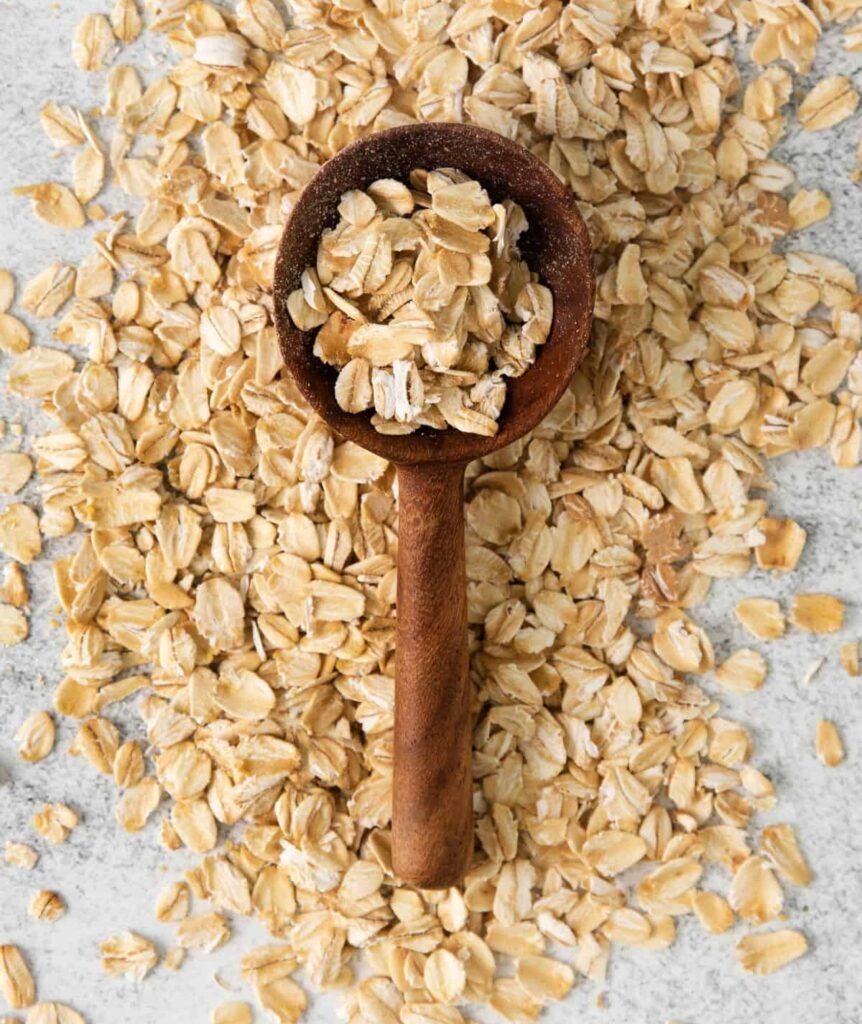
Soil Preparation
Early Growth (Germination to Establishment)

Early Growth
Tillering Stage (Shoot Development)

Tillering Stage
Flowering

Flowering
Matchuration & Ripening

Matchuration & Ripening
Harvesting

Harvesting
Kutki (Picrorhiza kurroa) Disease Details
Nutrition required by Kutki (Picrorhiza kurroa) at each stage of its life cycle.
SOIL PREPARATION

Soil Preparation
During the soil preparation stage of kutki cultivation (Picrorhiza kurroa), various diseases and pests can affect the crop.
Some common diseases and pests that may occur during this stage include:
1. **Fungal Diseases**:
- Damping off: Caused by various fungi, leading to seedling death.
- Root rot: Fungal pathogens infect the roots, leading to rotting and wilting of plants.
2. **Bacterial Diseases**:
- Bacterial wilt: Caused by Ralstonia solanacearum, leading to wilting and death of plants.
- Bacterial leaf spot: Causes leaf lesions and defoliation.
3. **Pests**:
- Cutworms: Larvae of moths that cut seedlings at the base.
- Aphids: Suck plant sap, leading to stunted growth and yellowing of leaves.
- Wireworms: Larvae of click beetles that feed on plant roots, causing wilting.
To prevent these diseases and pests during soil preparation and subsequent stages of kutki cultivation, the following precautions can be followed:
1. **Field Sanitation**:
- Clear the field of crop residues and weeds to eliminate potential disease sources and breeding grounds for pests.
- Rotate crops to break disease and pest cycles.
2. **Soil Management**:
- Ensure well-drained soil to prevent waterlogging, which can favor fungal diseases.
- Incorporate organic matter into the soil to improve soil structure and promote beneficial microbial activity.
3. **Seed Treatment**:
- Treat kutki seeds with fungicides to prevent damping off and seedling diseases.
- Use healthy, disease-free seeds from reliable sources.
4. **Preventive Measures**:
- Use clean equipment and tools to avoid spreading diseases.
- Practice crop rotation to reduce pest and disease pressure.
- Monitor the field regularly for signs of diseases and pests and take appropriate action promptly.
5. **Biological Controls**:
- Introduce beneficial organisms like predatory insects or parasitic nematodes to control pests naturally.
6. **Chemical Controls**:
- Apply approved pesticides and fungicides according to recommended dosages and timings, if necessary, to control pests and diseases.
7. **Cultural Practices**:
- Proper spacing between plants can improve air circulation, reducing the risk of fungal diseases.
- Mulching can suppress weed growth and maintain soil moisture, reducing stress on plants.
8. **Integrated Pest Management (IPM)**:
- Implement an integrated approach combining various control methods to minimize the use of chemicals and prevent pest resistance.
By following these precautions and best practices, growers can minimize the risk of diseases and pests during the soil preparation stage and throughout kutki cultivation, promoting healthy plant growth and higher yields.
Early Growth (Germination to Establishment)

Early Growth
During the early growth stage (germination to establishment) of kutki (Picrorhiza kurroa) cultivation, several diseases and pests can affect the crop.
Here are some common diseases and pests that may occur during this stage, along with precautions to prevent them:
1. **Damping-off:** Damping-off is a common fungal disease that affects young kutki seedlings, causing them to wilt and die at the soil level.
**Precautions:**
- Use disease-free planting material from reputable sources.
- Ensure proper soil drainage to prevent waterlogging, which promotes damping-off.
- Avoid overwatering seedlings and maintain optimal moisture levels.
- Treat seeds with fungicides before sowing to reduce fungal infections.
2. **Seedling Blight:** Seedling blight is caused by various fungal pathogens and can result in poor seedling emergence and growth.
**Precautions:**
- Practice crop rotation to reduce the buildup of fungal pathogens in the soil.
- Use well-draining soil and avoid excessive soil moisture.
- Space seedlings appropriately to improve air circulation and reduce humidity.
- Apply fungicides or biofungicides as preventive measures, following recommended guidelines.
3. **Cutworms and Wireworms:** Cutworms and wireworms are common soil pests that feed on kutki seedlings, causing damage to stems and roots.
**Precautions:**
- Use physical barriers such as collars around seedlings to prevent cutworm damage.
- Monitor fields regularly for signs of pest infestation and take appropriate control measures.
- Apply soil treatments or biological control agents to manage cutworm and wireworm populations.
4. **Leaf Miner Insects:** Leaf miner insects can damage kutki seedlings by tunneling through leaves, leading to reduced plant vigor and growth.
**Precautions:**
- Monitor seedlings for signs of leaf miner infestation, such as visible tunnels or trails on leaves.
- Implement cultural practices such as removing and destroying infested leaves to reduce leaf miner populations.
- Apply insecticides or biological control agents targeting leaf miners if infestations are severe.
5. **Nutrient Deficiencies:** Nutrient deficiencies can affect kutki seedling growth and development, leading to stunted growth and poor establishment.
**Precautions:**
- Conduct soil tests to assess nutrient levels and adjust fertilization practices accordingly.
- Amend the soil with organic matter and balanced fertilizers to provide essential nutrients for seedling growth.
- Monitor seedlings for symptoms of nutrient deficiencies and address deficiencies promptly through fertilization or foliar application of micronutrients.
By implementing proper cultural practices, regular monitoring, and integrated pest management strategies, growers can mitigate the risk of diseases, pests, and nutrient deficiencies during the early growth stage of kutki cultivation, promoting healthy seedling establishment and vigorous growth.
Tillering Stage (Shoot Development)

Tillering Stage
During the tillering stage (shoot development) of kutki (Picrorhiza kurroa) cultivation, several diseases and pests can affect the crop.
Here are some common diseases and pests that may occur during this stage, along with precautions to prevent them:
1. **Root Rot:** Root rot diseases caused by fungal pathogens such as Phytophthora spp. and Rhizoctonia spp. can affect kutki plants during the tillering stage, leading to rotting of roots and reduced plant vigor.
**Precautions:**
- Ensure proper soil drainage to prevent waterlogging, which promotes root rot development.
- Avoid overwatering and irrigate kutki plants based on their specific water needs.
- Practice crop rotation to reduce the buildup of soil-borne pathogens.
2. **Leaf Spot:** Leaf spot diseases caused by fungal pathogens can affect kutki plants during the tillering stage, leading to the development of small, dark spots on leaves and reduced photosynthetic activity.
**Precautions:**
- Monitor kutki plants regularly for signs of leaf spot diseases, such as leaf discoloration and spotting.
- Maintain proper spacing between plants to improve air circulation and reduce humidity, which can favor disease development.
- Apply fungicides or biofungicides preventively, following recommended guidelines and safety precautions.
3. **Insect Pests:** Various insect pests can affect kutki plants during the tillering stage, including aphids, thrips, and leaf miners, which can cause damage to leaves and affect plant growth.
**Precautions:**
- Monitor kutki plants regularly for signs of insect infestation, such as distorted leaves, wilting, or visible pests.
- Implement cultural practices such as removing and destroying infested plant parts to reduce pest populations.
- Apply insecticides or biological control agents targeting specific pests if infestations are severe, following recommended guidelines and safety precautions.
4. **Nutrient Deficiencies:** Nutrient deficiencies can affect kutki plants during the tillering stage, leading to stunted growth and reduced shoot development.
**Precautions:**
- Conduct soil tests to assess nutrient levels and adjust fertilization practices accordingly.
- Amend the soil with organic matter and balanced fertilizers to provide essential nutrients for kutki plants.
- Monitor plants for symptoms of nutrient deficiencies, such as yellowing or stunted growth, and address deficiencies promptly through fertilization or foliar application of micronutrients.
By implementing proper cultural practices, regular monitoring, and integrated pest management strategies, growers can mitigate the risk of diseases, pests, and nutrient deficiencies during the tillering stage of kutki cultivation, promoting healthy shoot development and vigorous growth.
Flowering

Flowering
During the flowering stage of kutki (Picrorhiza kurroa) cultivation, the plant is particularly vulnerable to certain diseases and pests that can affect flower development and overall plant health.
Here are some common diseases and pests that may occur during this stage, along with precautions to prevent them:
1. **Powdery Mildew:** Powdery mildew is a fungal disease that can affect kutki plants during the flowering stage, causing a white powdery growth on leaves and flowers, which can lead to reduced photosynthesis and flower development.
**Precautions:**
- Ensure proper spacing between kutki plants to improve air circulation and reduce humidity, which can favor powdery mildew development.
- Avoid overhead irrigation, as wet foliage can promote fungal growth. Use drip irrigation or water at the base of plants to keep foliage dry.
- Apply fungicides or biofungicides preventively, following recommended guidelines and safety precautions.
2. **Flower Bud Rot:** Flower bud rot is caused by fungal pathogens and can affect kutki plants during the flowering stage, leading to the rotting of flower buds and reduced flower production.
**Precautions:**
- Monitor kutki plants regularly for signs of flower bud rot, such as wilting or discoloration of flower buds.
- Remove and destroy infected flower buds promptly to prevent the spread of the disease.
- Maintain proper spacing between plants to improve air circulation and reduce humidity, which can reduce the risk of fungal infections.
3. **Insect Pests:** Insect pests such as aphids, thrips, and caterpillars can affect kutki plants during the flowering stage, feeding on leaves, flowers, and developing seeds, which can lead to reduced flower production and seed set.
**Precautions:**
- Monitor kutki plants regularly for signs of insect infestation, such as visible pests or damage to leaves and flowers.
- Implement cultural practices such as removing and destroying infested plant parts to reduce pest populations.
- Apply insecticides or biological control agents targeting specific pests if infestations are severe, following recommended guidelines and safety precautions.
4. **Nutrient Deficiencies:** Nutrient deficiencies can affect kutki plants during the flowering stage, leading to poor flower development and reduced seed set.
**Precautions:**
- Conduct soil tests to assess nutrient levels and adjust fertilization practices accordingly.
- Amend the soil with organic matter and balanced fertilizers to provide essential nutrients for kutki plants.
- Monitor plants for symptoms of nutrient deficiencies, such as yellowing of leaves or poor flower development, and address deficiencies promptly through fertilization or foliar application of micronutrients.
By implementing proper cultural practices, regular monitoring, and integrated pest management strategies, growers can mitigate the risk of diseases, pests, and nutrient deficiencies during the flowering stage of kutki cultivation, promoting healthy flower development and optimal seed set.
Matchuration & Ripening

Matchuration & Ripening
During the maturation and ripening stage of kutki (Picrorhiza kurroa) cultivation, the plant undergoes significant changes as it prepares for seed maturation and accumulation of bioactive compounds in the rhizomes. Although fewer diseases and pests are typically encountered during this stage compared to earlier growth stages, certain issues may still arise.
Here are some potential diseases and pests that may occur during the maturation and ripening stage of kutki, along with precautions to prevent them:
1. **Rhizome Rot:** Rhizome rot diseases, caused by fungal pathogens, can affect kutki rhizomes during the maturation and ripening stage, leading to rotting and decay of the underground storage organs.
**Precautions:**
- Ensure proper soil drainage to prevent waterlogging, which can promote rhizome rot.
- Avoid excessive irrigation during the maturation and ripening stage to reduce excess moisture around the rhizomes.
- Harvest kutki rhizomes promptly when they reach maturity to minimize the risk of fungal infections.
- Store harvested rhizomes in a cool, dry place with good air circulation to prevent rotting.
2. **Storage Pests:** Insects and pests may infest stored kutki rhizomes during the maturation and ripening stage if proper storage conditions are not maintained.
**Precautions:**
- Store harvested kutki rhizomes in clean, dry containers or bags to prevent pest infestation.
- Use airtight containers or sealed bags to protect rhizomes from moisture and pests during storage.
- Monitor stored rhizomes regularly for signs of pest infestation, such as holes or chew marks, and take appropriate measures to control pests if necessary.
3. **Nutrient Imbalances:** Nutrient imbalances during the maturation and ripening stage can affect the quality and potency of kutki rhizomes, impacting their medicinal properties.
**Precautions:**
- Ensure that kutki plants receive adequate nutrients throughout the growing season to support rhizome maturation and bioactive compound accumulation.
- Conduct soil tests to assess nutrient levels and adjust fertilization practices accordingly to meet the nutritional needs of kutki plants during the maturation and ripening stage.
4. **Post-Harvest Handling:** Improper handling and storage of harvested kutki rhizomes can lead to quality deterioration and loss of medicinal efficacy.
**Precautions:**
- Handle harvested rhizomes carefully to avoid bruising or damage.
- Store kutki rhizomes in a cool, dry place away from direct sunlight to maintain their quality and medicinal properties.
- Use proper packaging and storage techniques to minimize physical damage and exposure to pests and pathogens.
By following these precautions and implementing proper post-harvest management practices, growers can minimize the risk of diseases, pests, and quality deterioration during the maturation and ripening stage of kutki cultivation, ensuring the production of high-quality medicinal rhizomes with optimal potency and efficacy.
Harvesting

Harvesting
During the harvesting stage of kutki (Picrorhiza kurroa) cultivation, the focus is on the proper collection and processing of the medicinal rhizomes. While specific diseases and pests may not directly affect the harvested rhizomes, there are still certain precautions to be followed to ensure the quality and efficacy of the harvested material:
1. **Handling Precautions:**
- Handle harvested kutki rhizomes carefully to avoid bruising or damage, as physical injuries can lead to quality deterioration.
- Use appropriate tools such as spades or digging forks to carefully loosen the soil and extract the rhizomes without causing damage.
2. **Cleaning and Sorting:**
- Wash the harvested kutki rhizomes thoroughly with clean water to remove any remaining soil or debris.
- Sort the rhizomes based on size and quality, discarding any damaged or diseased rhizomes to prevent contamination of the entire batch.
3. **Drying:**
- After cleaning, spread the kutki rhizomes in a single layer on clean, dry surfaces in a well-ventilated area to air dry completely.
- Proper drying is crucial to prevent mold or fungal growth and ensure the longevity of the harvested material.
4. **Storage:**
- Once dried, store the kutki rhizomes in a cool, dry place away from direct sunlight.
- Use airtight containers or sealed bags to protect the rhizomes from moisture and pests during storage.
5. **Quality Control:**
- Monitor the stored kutki rhizomes regularly for any signs of spoilage, mold, or insect infestation.
- Discard any damaged or spoiled rhizomes to prevent contamination of the entire batch.
6. **Hygiene Practices:**
- Maintain good hygiene practices during harvesting, handling, and processing to minimize the risk of contamination.
- Clean and sanitize tools and equipment used for harvesting and processing kutki rhizomes to prevent the spread of diseases and pests.
7. **Pest Management:**
- Implement pest management practices to prevent infestation of stored kutki rhizomes by pests such as insects or rodents.
- Use appropriate insecticides or biological control agents to protect stored rhizomes from pest damage.
By following these precautions and best practices during the harvesting stage, growers can ensure the quality and efficacy of the harvested kutki rhizomes for use in traditional medicine and herbal preparations. Proper handling, cleaning, drying, and storage techniques are essential for preserving the medicinal properties of kutki rhizomes and maintaining their overall quality.
